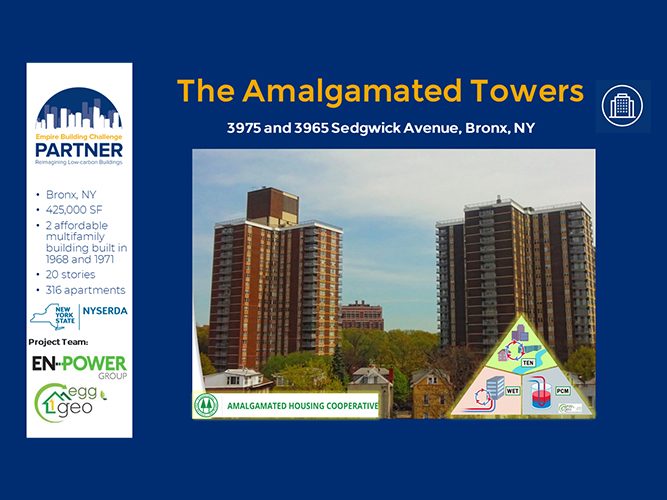Wastewater Energy Transfer Hits the Big Time
This technology, which extracts the heat by sending wastewater through a heat exchanger, is closely related in concept to ERVs.

As part of energy efficiency and decarbonization, we have been developing technologies to recover energy normally wasted from buildings through exhaust recovery ventilators (ERVs) and, more recently, to recover energy going down the drain.
Wastewater energy transfer (WET) has risen to the top as a preferred initial method to begin the decarbonization efforts for commercial buildings and thermal energy networks (TENs) of all types and sizes. Federal and state geothermal programs are seeking to find novel ways to decarbonize buildings that could be applied in a broad spectrum.
While decarbonization using heat pumps is the obvious path forward, the struggle has been that providing space heating and domestic hot water when the temperature is very cold outside causes electrical demand spikes that can be two or three times higher than normal. Air-source heat pumps must necessarily work with very cold outdoor temperatures.
The solution is to use a heat source and sink that is more stable year-round, such as the Earth. Using geothermal boreholes is a marvelous solution, but it requires drill rigs and disruptive construction. While this is a necessary part of progress, perhaps on the front end, we could find something less disruptive to decarbonize buildings’ domestic hot water needs to start with. This is where WET has such an attractive draw to potential users.
In many cases, all the energy transfer needed for a building’s domestic hot water load can be met by extracting that energy from the wastewater leaving the building. The building’s domestic hot water needs may often be met without a single borehole by using wastewater heat pumps.
The ultimate solution is to provide the heating and cooling needs for the building. Hybrid applications of WET and borehole thermal energy exchange are a marvelous combination.
EN-POWER, a New York City-based engineering firm, asked for Egg Geo to become co-applicants with them on the New York state program early in 2022. The Amalgamated Housing Cooperative was named as one of six winners of the second round of awards, with a chance to win up to $3 million toward the development of its project.
Wastewater Energy Exchange
Every day, our homes, office buildings, schools, commercial establishments, hospitals, etc., have a tremendous amount of potable water piped into their plumbing systems. Nearly all potable water that is plumbed into our buildings eventually goes down the sewer. The water comes into the buildings at a temperature somewhat affected by the seasons.
As an example, during the middle of the summer in the southern states, it’s not uncommon to see fluid temperatures at 80 F or above coming into buildings. By the same token, during the wintertime, it is not uncommon to see fluid temperatures in the 40s F coming into our buildings, especially in the northern tier.
What do all these fluids have in common? They all eventually leave the building at room temperature, roughly between 65 F and 75 F. That is because the fluid coming into our buildings is tempered to conditioned room temperature; it’s how heat transfer works. Anything inside our homes and buildings will assume room temperature after a period.
In other words, we are paying to heat and cool the fluids coming into our buildings — at an average rate of 82 gallons/day (gpd) per person (https://bit.ly/3sPM8wZ). Let’s talk about how much energy that is.
With over 330 million individuals in the United States using 82 gpd at an average temperature difference of 20 degrees, that is 1.3 billion kWh of energy per day or more than 480 billion kWh per year. By the way, that figure was estimated at 350 billion kWh per year in 2005.
In 2021, the average annual electricity consumption for a U.S. residential utility customer was 10,632 kWh/year (https://bit.ly/35SSNxo). At that rate, wastewater extraction could provide equivalent kWh (in thermal energy) for 44,846,395 U.S. households.
According to the U.S. Census Bureau, there are presently 143,786,655 U.S. households, meaning wastewater energy recovery has the potential to recover more than 32% (up to 40%) of that energy (https://bit.ly/3r7ifd1).
Wastewater thermal energy extraction is here. It sounds messy, but don’t worry; others have done much of the dirty work for us. This technology is related closely in concept to ERVs and will likely be a code requirement in the coming years.
Whenever you take a shower, or run the washing machine or dishwasher, the temperature of the water going down the drain is going to be warm, at least as warm as the indoor temperature. That even accounts for flushing toilets because those flush tanks often have enough time indoors to assume room temperature.
Wastewater energy exchange extracts the heat by sending wastewater through a heat exchanger, where a geothermal heat pump heats the domestic water. It can even provide space heating and cooling, or about any other heating and cooling function that may be needed.
Go onto the SHARC (https://bit.ly/3Jvcb4B) or the New York website to learn more about this and other amazing projects that are decarbonizing using heat pump technologies (https://on.ny.gov/3oY1T1T). You can see more about Amalgamated Housing Cooperative by downloading its fact sheet on this project (https://on.ny.gov/3XncsuJ).






